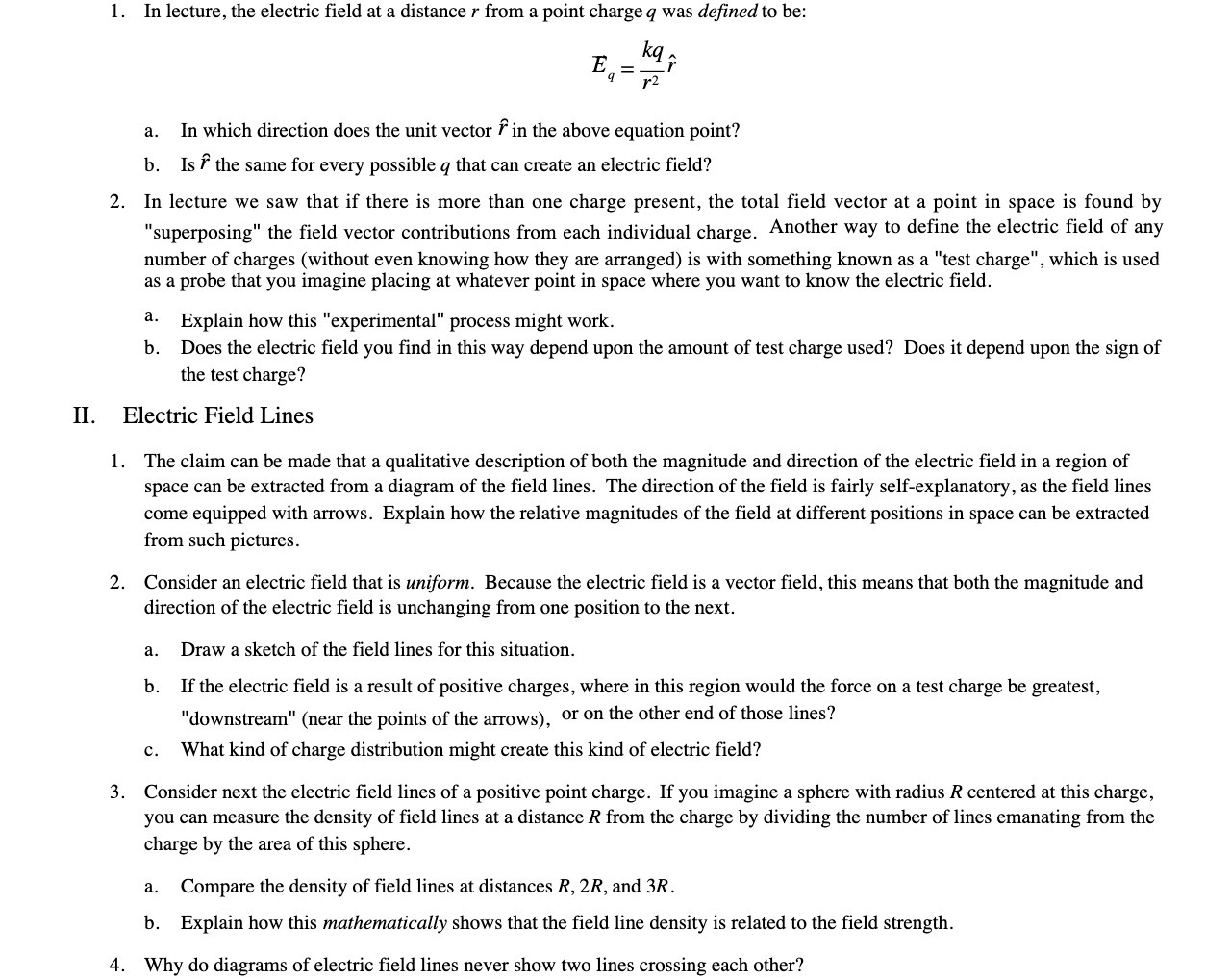1. In lecture, the electric field at a distance r from a point charge q was defined to be: kq ; Eq = 72 a. In which direction does the unit vector / in the above equation point? b. Is f the same for every possible q that can create an electric field? 2. In lecture we saw that if there is more than one charge present, the total field vector at a point in space is found by "superposing" the field vector contributions from each individual charge. Another way to define the electric field of any number of charges (without even knowing how they are arranged) is with something known as a "test charge", which is used as a probe that you imagine placing at whatever point in space where you want to know the electric field. a. Explain how this "experimental" process might work. b. Does the electric field you find in this way depend upon the amount of test charge used? Does it depend upon the sign of the test charge? II. Electric Field Lines 1. The claim can be made that a qualitative description of both the magnitude and direction of the electric field in a region of space can be extracted from a diagram of the field lines. The direction of the field is fairly self-explanatory, as the field lines come equipped with arrows. Explain how the relative magnitudes of the field at different positions in space can be extracted from such pictures. 2. Consider an electric field that is uniform. Because the electric field is a vector field, this means that both the magnitude and direction of the electric field is unchanging from one position to the next. a. Draw a sketch of the field lines for this situation. b. If the electric field is a result of positive charges, where in this region would the force on a test charge be greatest, "downstream" (near the points of the arrows), or on the other end of those lines? C. What kind of charge distribution might create this kind of electric field? 3. Consider next the electric field lines of a positive point charge. If you imagine a sphere with radius R centered at this charge, you can measure the density of field lines at a distance R from the charge by dividing the number of lines emanating from the charge by the area of this sphere. a. Compare the density of field lines at distances R, 2R, and 3R. b. Explain how this mathematically shows that the field line density is related to the field strength. 4. Why do diagrams of electric field lines never show two lines crossing each other







